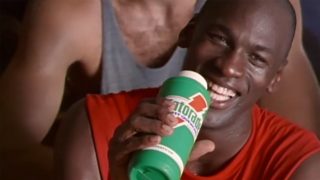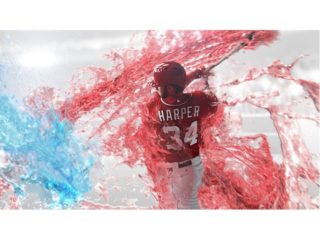“Sometimes I dream, that he is me . . . ”
That’s the line that begins Gatorade’s brand-defining commercial “Be Like Mike,” one of the most iconic ads and brand jingles of all time. It was a spot ideated in three days and dedicated to basketball great Michael Jordan, a newly signed spokesman at the time.
That was back in 1991. Before the brand signed Jordan, they used Vinnie Johnson, a solid NBA veteran, but a player who was lightyears away when it came to the marketing caliber of His Airness.
As Gatorade marketed a brand message and taught the world about electrolytes in the height of Jordan’s six-championship run, their brand equity boomed for the better, too. The sports drink pioneer’s fate would change for decades to come.

Now Gatorade, an idea born in the lab that launched an entire category, sits comfortably on the Mount Rushmore of brands consumers identify most with athletes and sports.
Although affiliated with the NBA since the mid-1980s, their hoops stronghold gripped tighter from the sideline-branded towels, jugs, drinks and podium props during pressers to rebranding the NBA’s D-League to the Gatorade League, or “G-League,” starting next season. The feat is momentous because it’s the first time a US professional sports league has an entitlement sponsor.
Gatorade’s A-list coup of brand ambassadors throughout the years—and the weekly drenching of coaches—surely support their strategy and amplify their ubiquitous logo. But their pivot back to their roots of innovation, specifically by returning to its science-based origins and experimenting with cutting-edge tech platforms, is where the PepsiCo-owned brand is being positioned.
Kenny Mitchell, Gatorade’s senior director of consumer engagement, oversees the brand’s integrated marketing efforts, including advertising, branded content, digital, social media and public relations. Mitchell, who previously oversaw brand and consumer marketing for NASCAR, joined AListDaily to share how the sports drink brand is ushering in a new era by developing messages for the future of sports fuel and hydration.
You recently wrapped up a second consecutive year at SXSW. What is the impetus of your experiential marketing?
For events like SXSW, we like to give consumers an inside look at our innovation. Our “Fuel Lab” [a real facility in Barrington, Illinois] activation in 2016 showcased our GX platform, which focused on athlete customization and personalization. When we came back this year, we wanted to advance the narrative. So we partnered with Sports Illustrated and forward-thinking companies like virtual reality company STRIVR to look at what the future of the NFL Combine can look like through athlete evaluation. When consumers leave our experiential spaces, we hope that they take away that Gatorade is an innovative company, all while learning something new about themselves, and their bodies.

How is Gatorade connecting with consumers through tech and innovation?
As a brand that was literally born in a laboratory at the University of Florida, innovation and technology is something that’s in our veins. We’re looking at how we can leverage technology to help inform our product and service team. The work that we do at the Gatorade Sports Science Institute is really focused on exercise, physiology and using the latest in scientific advancement to help drive performance. That’s one way we’re going to market in a meaningful way. The other is actually how we connect to consumers, and tell them our brand stories. And we do that through all of the traditional marketing channels to help inform consumers about our agenda.
What is the best go-to market strategy that you’ve experienced?
Our marketing strategy at its core is to connect with consumers, which are competitive athletes, and help ensure that we’re educating them so that they understand our product and brand. We also want to inspire and motivate with our storytelling. Whether you grew up in the Michael Jordan-Gatorade era or right now, we’re always looking at the best ways to drive that connection. We do that through creative and emotional relevance. Of course, we do that through whatever medium best makes sense for the specific idea. But it all boils down to connecting with athletes and helping fuel their performance through inspiration and education.
What are some new verticals and platforms you’re testing with your marketing?
We’ve done programs with virtual-and-augmented reality, Snapchat, AI, bots and machine learning. We’re doing a lot in the mobile space with AR, whether it be through existing platforms and mediums or unique things [like the Serena Williams Snapchat game] we build bespoke. We are always continually looking at new tools and capabilities to tell our brand story. Twenty years ago, it was TV, print, radio and out-of-home advertising—that’s all you had. We still leverage print and TV in a meaningful way. Right now, there are a variety of programs to get our message across. For us, it’s about finding the athletes, and they are everywhere. Music is a good example. If you’re working out, then you’re likely listening to music. So we can also market through that. We just have to make sure we’re doing it in a meaningful way.

You have a top-notch roster of athletes from all of the major sports to endorse the Gatorade brand. How are you marketing from a more micro level?
We are constantly looking at that and reevaluating. What I’d say is that in the sports space, the most material influencer is actually the folks that work most closely with the athletes. Influencers in our world are trainers, nutritionists, dietitians and strength and conditioning coaches. They’re the ones who recommend our products. Those folks are the hardcore influencers for us. We work very closely with them in the locker rooms to help make sure they are getting the best products, services and education from our brand. Then when it comes to storytelling and inspiration, that’s when we tab the likes of Bryce Harper, Dwyane Wade and Usain Bolt. What you won’t find in the sports world are a ton of aspirational influencers that you would find in humor, fashion or beauty and make-up. In the sports space, if you’re young, you’re going to love the athletes that you’re watching. You’re likely not going to look for an influencer who is good at baseball and is on YouTube. So, we have influencers. They’re just the different kind.
How are you reinventing the message behind the brand?
Our “Burn It to Earn It” campaign in September highlighted the fact that our product is for athletes. It actually was a bit of a bold statement to say “this product is only intended for people who are working hard.” It was a bold message to say “this isn’t for you” if you’re not sweating. After all, Gatorade is formulated to help fuel athletes who are working hard so they can perform at their absolute best. If you’re not one of those guys, this isn’t a product for you.
Follow Manouk Akopyan on Twitter @Manouk_Akopyan

